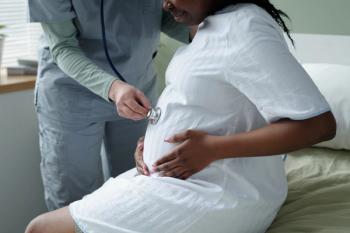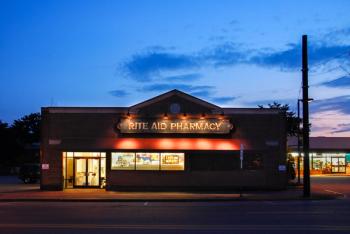
Study: COVID-19 Transmission in Schools is Lower With Control Measures in Place
Key Takeaways
- COVID-19 transmission in schools is low with effective test-trace-isolate strategies, showing a 1.2% secondary attack rate among 1,448 contacts.
- Child-to-child transmission was 0.3%, while staff-to-staff transmission was 4.4%, indicating children are less likely to transmit the virus than adults.
Researchers attempt to address a lack of evidence showing that schools have a role in the transmission of COVID-19.
According to a study published in The Lancet Child & Adolescent Health, coronavirus disease 2019 (COVID-19) transmission is low when a broad test-trace-isolate program is put in place in schools. The study assessed data between January and April 2020 in New South Wales in Australia to investigate COVID-19 transmission in schools and nurseries.
School closures have had detrimental effects on children’s mental health and wellbeing, with the potential for increasing inequality, according to the study. Additionally, there is a lack of evidence showing that schools have a role in the transmission of COVID-19, as a majority of the data available have used modeling to predict estimates rather than real-world data from schools.
In order to address this lack of information on transmission in schools, the study compiled real world data from schools during the period of January to April 2020 within 25 schools and nurseries in New South Wales, Australia. The results of the study showed that the risk of COVID-19 transmission among children and staff in educational settings was very low due to the contact tracing and epidemic management that was in place during this time.
The study found that of the 25 schools and nurseries assessed, only 27 children or teachers went to school while they were infectious, with an additional 18 people later becoming infected as well. This is out of 1448 contacts in total, showing a secondary attack rate of 1.2%.
These results demonstrate that schools and nurseries do not pose a high risk for COVID-19 transmission when effective contact testing strategies are in place, according to the study authors.
Overall, Australia had comparatively low COVID-19 incidence during the first wave of the pandemic, so the country decided to keep its schools open for that period of time, with strict guidance in place regarding physical distancing and hygiene.
"Our findings are the most comprehensive data that we have yet on SARS-CoV-2 transmission in schools and early years education settings," said Kristine Macartney, director of the National Centre for Immunisation Research and Surveillance and a professor at the University of Sydney, in a press release.
The study compiled data from laboratory-confirmed COVID-19 cases in New South Wales in Australia and identified all staff and children aged 18 years or younger who attended school or nurseries while infectious with COVID-19 using the state's centralized reporting system.
In order to implement effective tracing, all infectious students or their guardians were interviewed upon the student’s diagnosis to track their attendance at the school or nursery, as well as any of their close contact with people in the community during the period in which they were infectious.
The researchers analyzed the data pulled from all 3103 schools and approximately 4600 nurseries in New South Wales that followed this tactic, which occurred over a 3-month period from the first COVID-19 case on January 25 to the end of the school term on April 10, 2020.
Close contact with people in the community was defined as face to face interaction with an individual for a minimum of 15 minutes or 40 minutes if in an indoor space. Such contact was identified using timetables and interviews with parents and school officials.
Once identified as having been in close contact with an infectious individual, such individuals were monitored with regular phone calls and asked to quarantine for 14 days. If they started to show symptoms, the individuals were asked to take a COVID-19 test, which then allowed the researchers to assess how many secondary transmissions were associated with each primary case identified.
In total, the researchers found that 12 children and 15 adults attended school while infectious across 15 schools and 10 nurseries. The researchers then identified 1448 close contacts who were followed up with regular phone calls and instructed to be tested if they showed symptoms. Of these people, 633 (43.7%) were tested for COVID-19 after either showing symptoms or opting for a test.
Among the 633 close contacts tested for COVID-19, 18 were tested positive, resulting in 1.2% of all close contacts (1,448) testing positive after exposure.
Additionally, a subset of 7 schools and nurseries underwent additional investigations including antibody testing, symptom surveys, and extra nucleic acid testing for the virus. The results from these investigations showed that the child-to-child transmission rate was 0.3%, with a 1.0% for the child-to-staff rate. Transmission from staff-to-child was found to be 1.5% and staff-to-staff was 4.4%. The researchers noted that this finding suggests that children are less likely to transmit the virus than adults.
The study also identified only 98 children who were infected among 1.8 million children in New South Wales. This accounts for 3.2% of total COVID-19 infections, which confirms the low rates of COVID-19 among this age group, according to the study.
"The study adds valuable data, but it is important to view these findings in the context of the [New South Wales] outbreak,” Macartney said. “It may be that higher rates of transmission occur in areas with higher levels of infection and where contact tracing and public health measures were not as rigorous as in Australia, where borders were closed, and quarantine measures were strongly enforced. Schools were also closed temporarily for thorough cleaning if a pupil or staff member was found to be infected."
REFERENCE
The Lancet Child & Adolescent Health: Effective testing and contact tracing is essential for schools to safely open during COVID-19 pandemic, two studies show. The Lancet; August 3, 2020. eurekalert.org/pub_releases/2020-08/tl-pss080320.php. Accessed August 12, 2020.
Newsletter
Stay informed on drug updates, treatment guidelines, and pharmacy practice trends—subscribe to Pharmacy Times for weekly clinical insights.




















































































































































































































